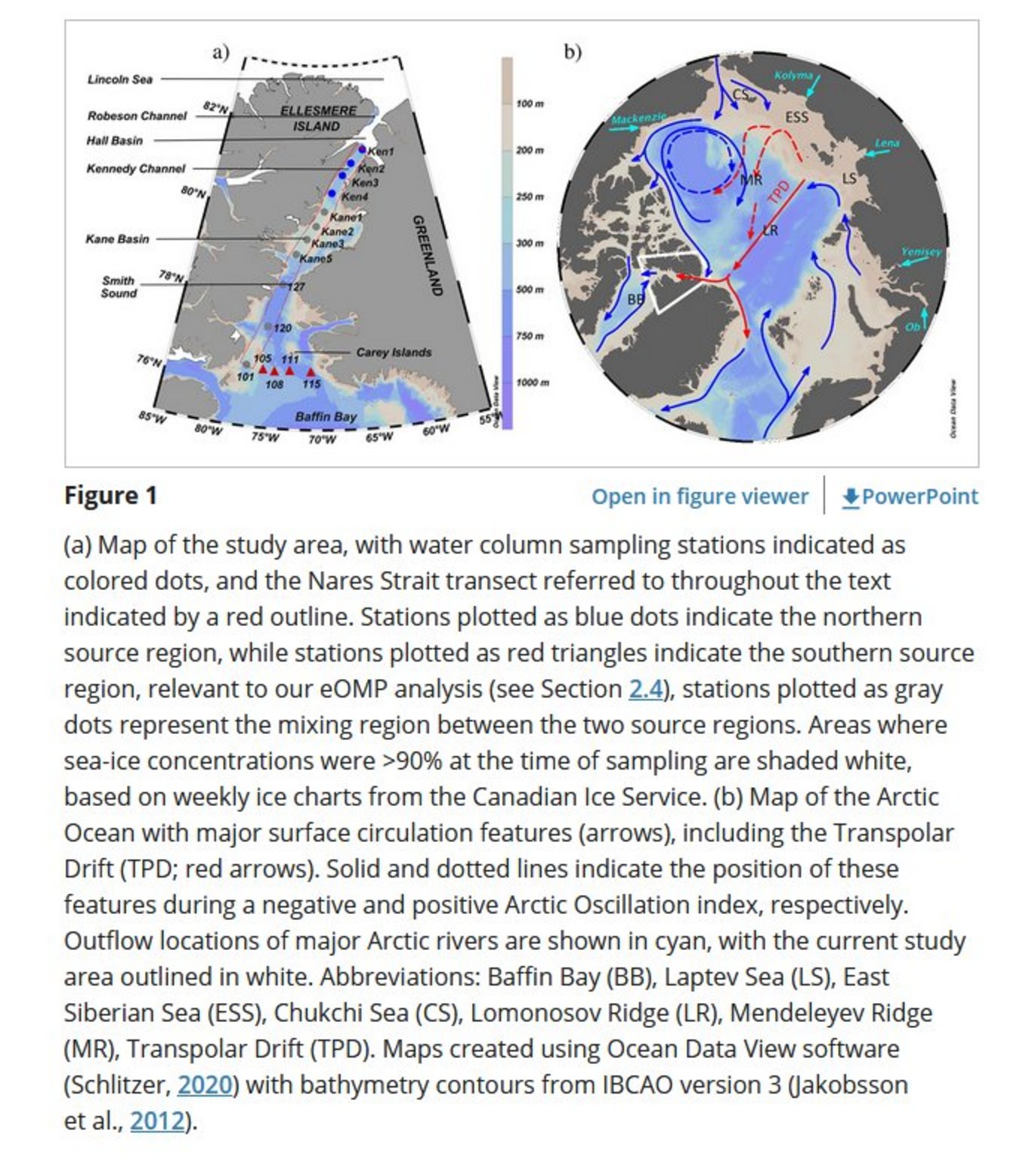Distinguishing Physical and Biological Controls on the Carbon Dynamics in a High-Arctic Outlet Strait
New publication by T. M. Burgers, L. A. Miller, S. Rysgaard, J. Mortensen, B. Else, J.-É. Tremblay, T. Papakyriakou

Abstract
The water mass assembly of Nares Strait is variable, owing to fluctuating wind forcings over the central Arctic Basin, and irregular northward flows from the West Greenland Current (WGC) in Baffin Bay. Here we characterize the physico-chemical properties of the water masses entering Nares Strait in August 2014. We employ an extended optimum multi-parameter (OMP) analysis to estimate the mixing fractions of predefined source water masses, and to distinguish the role of physical and biological processes in governing the distribution of dissolved inorganic carbon (DIC) in Nares Strait. We show the first documented evidence of Siberian shelf waters arriving in Nares Strait, along with a diluted upper halocline layer of partial Pacific-origin. These mixed-origin water masses appear to play an important role in driving a modest phytoplankton bloom in Kane Basin, leading to decreased surface pCO2 concentrations in Nares Strait. Although inorganic nitrogen was already limited near the surface in northern Nares Strait, the rather shallow upper halocline layer and the shoaling bathymetry in Kane Basin facilitated upwelling of nutrients to the surface. Our observations suggest that the positioning of the Transpolar Drift, and hence the balance of Atlantic and Pacific water delivered to Nares Strait, may play an important role in regional biological productivity and carbon uptake from the atmosphere. We also observed water masses from the WGC transported as far north as Kane Basin, contributing to relatively high pCO2 and low pH in the intermediate and deep water column of southern Nares Strait and northern Baffin Bay.
